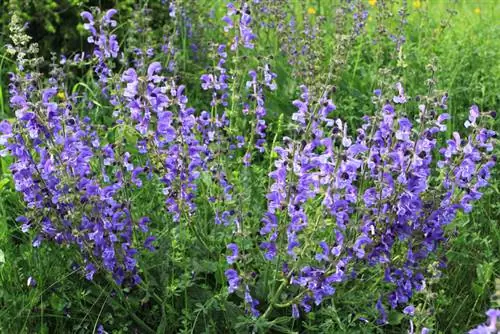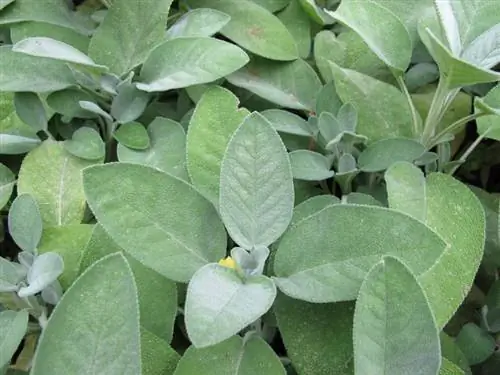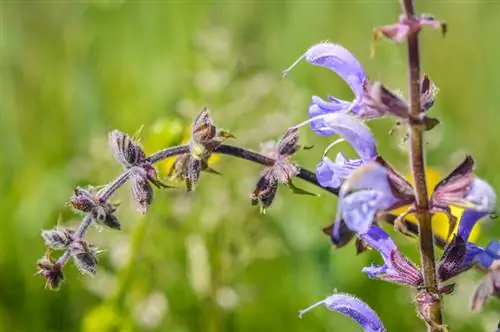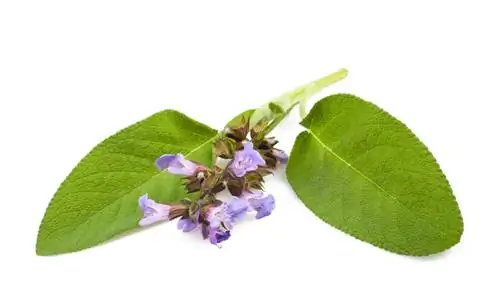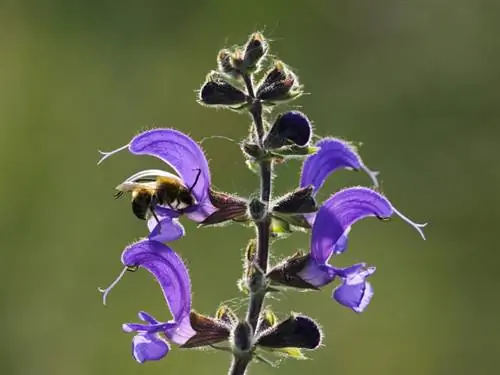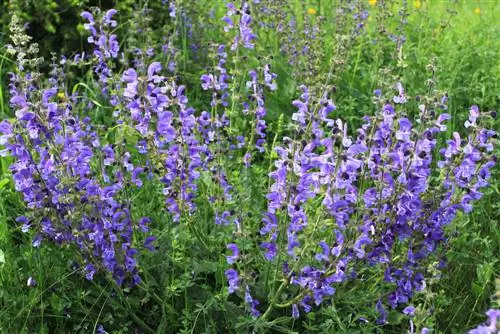- Author admin [email protected].
- Public 2023-12-16 16:46.
- Last modified 2025-01-23 11:20.
Like real sage, the wild form meadow sage is not poisonous. On the contrary, the wild plant contains exactly the same active ingredients as all other types of sage and is therefore considered a medicinal plant. However, the effect is significantly less than that of real sage.
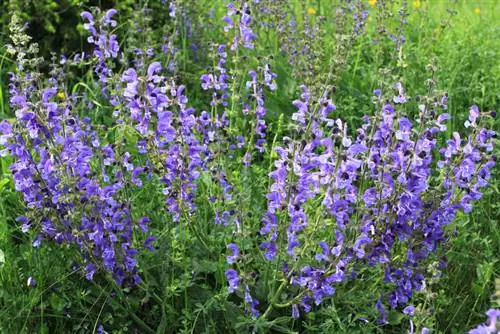
Is meadow sage poisonous?
Meadow sage is not poisonous. As a medicinal plant, it contains valuable ingredients such as tannic acid, bitter substances, flavonoids, camphor and essential oils that provide relief from inflammation or sweating. However, its effect is milder than that of real sage.
Meadow sage does not contain any toxic substances
Toxins are not present in the leaves and flowers of meadow sage. The wild plant contains some active ingredients that provide relief from inflammation, sweating and other complaints.
Ingredients include:
- tannic acid
- Bitter substances
- Flavonoids
- Camphor
- essential oils
- estrogen-like active ingredients
Meadow sage has a milder taste than common sage. The leaves therefore also go well with salads or are used to decorate vegetable platters and soups.
Tip
Meadow sage has a long flowering period. From May to August new inflorescences with the typical blue-violet, occasionally white or pink flowers are formed. As a medicinal herb, the leaves are collected throughout the flowering period.

